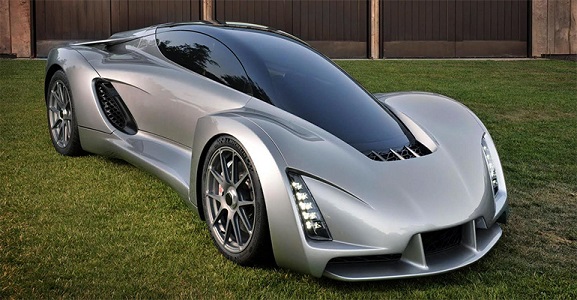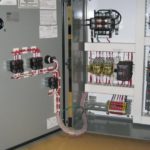
Advantages of 3d printing in automotive industryThis write-up will discuss why 3D Printing has had such a massive effect on the automotive industry and how it can be implemented to enhance functionality whilst lowering lead instances and expense. As per MRFR analysis, the worldwide 3D printing in automotive marketplace is probably to grow at a CAGR of 26.two% during the forecast period, exactly where the industry value is expected to attain USD two,512.three million by 2023. Over the years, it has been analyzed that the automotive market has come up with many technological advancements which has decreased the manufacturing and production expense as well as low upkeep cost have boosted up the demand.
The most crucial aspect in automotive business is to develop light weight element in order to improve the efficiency of the vehicles and minimize the fuel consumption. The automotive sector tends to make use of complex engineering tactics to be utilized in order to lessen the weight and improve the performance. The additive manufacturing tends to make use of lightweight polymers and metals to create numerous automotive merchandise.
The elevated investments in investigation and development for introduction of innovative printing materials and expense-efficient printers has strengthened the competitors among the players of the worldwide 3D printing in automotive market place. The main focus of players on expansion of their businesses via strategic mergers and acquisitions is aiding the development of the international 3D printing in automotive market.
Industries3d printing in automobile industry
3d printing in automotive industryThe automotive industry has been the driving force for 3D printing ever given that its formation: so much so that the technology researcher SmarTech predicts that 3D printing in the automotive sector will be worth $1.1 billion a year by 2019. But can 3D printing move beyond prototyping right now? 3D printing for mass-production components can be challenging,” says Lindsay Lewis, account manager at Synergeering. I feel 3D printing will remain largely beneficial to decrease-volume production. This might imply greater-finish autos or military automobiles. Also, there is a new trend in the automotive market for re-manufacturing. This is to decrease inventory or generate parts that OEMs might not be producing or storing any longer. Usually, re-manufacturing will be for vehicles that are older, say 15 to 20 years.
There has been considerable advancement in the manufacturing technologies majorly in additive commonly known as 3D printing. 3D printing has changed the way of producing the goods majorly in design and style, development, and distribution. The advancement in technology have opened ways for automotive manufacturers to introduce new design and style, cleaner goods, lighter, and protected goods. The OEM’s and suppliers are mainly focusing on additive manufacturing for building speedy prototype. The development of 3D priming will allow the automotive producers to innovate their products in order to compete in the industry.
3D printing technology is aiding the automotive sector by delivering functional prototype phases, styles, element manufacturing and tools production. As per the report published by Industry Research Future (MRFR), the global 3D printing in automotive industry is anticipated to expand remarkably at a striking CAGR of 26.2% during the forecast period of 2017-2023.
Additive Manufacturing Is Driving The Future Of The Automotive Sector3d printing used in automotive industry
3d printing applications in automotive industryNewest industry investigation report on Automotive wiring harness is an electrical assembly of a variety of elements in a automobile that conveys energy and information to a single technique. Various automotive components are produced from different components , in varying shapes and thicknesses, not to mention levels of complexity. Then there are the computer and electrical systems, the engines, the batteries. So one can not basically press a button and have a automobile printed in a single go. Indeed, a conventional assembly line could make a hundred vehicles at a time, although even the most advanced 3D printers of right now and the close to term future would be restricted to printing just 1. And yet, that is the dream.
Rising research and development activities and innovations is strengthening the automotive market worldwide. With a enormous capital investment in automotive technology, many manufacturers are focusing on light weight autos to reduce the fuel consumption and low emission. Amongst all the R&D activities, 3D printing in automotive has come up with a speedy pace and gaining interest in the global automotive sector.
The report for Global 3D Printing in Automotive Market of Marketplace Analysis Future comprises of in depth major analysis along with the detailed evaluation of qualitative as properly as quantitative elements by various sector authorities, essential opinion leaders to gain the deeper insight of the market and sector overall performance. The report offers the clear picture of present marketplace situation which consists of historical and projected industry size in terms of value and volume, technological advancement, macro economical and governing variables in the market. The report gives details info and methods of the best important players in the industry. The report also gives a broad study of the distinct marketplace segments and regions.
First Automotive Manufacturer To Use New 3D Printing3d printing in automobile industry
advantages of 3d printing in automotive industryLONDON, UK. 10th April 2017: Visiongain ‘s new report the 3D Printing Technologies Market place Report 2017-2027 : Forecasts For Additive Manufacturing (AM) By Application (Automotive, Customer Electronics, Medical, Individual, Industrial, Aerospace, Education, Other people) By Procedure (Powder Bed Fusion (PBF), Material Jetting, Material Extrusion, Vat Photopolymerization, Directed Energy Disposition (DED), Binder Jetting, Sheet Lamination) By Technologies (SLA, Selective Laser Sintering (SLS), Electron Beam Melting (EBM), Fused Deposition Modelling (FDM), Laminated Object Manufacturing (LOM), 3D Inkjet Printing (3DP), Polyjet Printing (MJP) , Direct Metal Laser Sintering (DMLS), Direct Light Projection (DLP), Laser Metal Deposition (LMD), Other folks) By Material (Metal, Polymer, Ceramics, Other people) By Printer Variety (Commercial, Customer) indicates that the international 3D printing market place will see $6.98bn in spending in 2017. The rising concentrate on introducing revolutionary and efficient printing materials to offer lightweight spare parts, decreasing material wastage and lowering the turnaround time is driving the expansion of the international 3D printing in automotive industry. The increasing government help for analysis and development in 3D printing technology is likely to influence positively on the growth of the global 3D printing in automotive market.
Expanding investment on study and development activities and innovations is reinforcing the automotive industry worldwide. With an huge capital investment in automotive technology, a quantity of makers are aiming on light weight automobiles to decrease the fuel consumption and low emission. Amongst all the R&D activities, 3D printing in automotive has come up with a speedy pace and gaining consideration in the international automotive sector. Furthermore, the automotive firms are adopting new technologies to reduce car weight and handle emission. In addition, the low manufacturing cost, decreased wastage and elevated production rate are driving the worldwide 3D printing market place. Additionally, the income levels of men and women in the emerging nations have been steadily rising due to the emerging economies and the government initiatives.
The basic challenge today is the reality that every single single aspect of the automotive expertise — from who is going to drive cars, to no matter whether we will drive vehicles — is becoming shaken to its core. The era of IoT and the guarantee of autonomous automobiles has catalyzed what is maybe the largest industrial arms race in recorded automotive history. It is a race for the future of the connected life style, shared mobility and, crucially, the new monetization streams promised by that life style. Automakers are struggling to harvest these new possibilities. Few industry players are ready for — or even prepared to publicly acknowledge — that grand challenges which lie ahead of autonomous shared mobility monetization.








